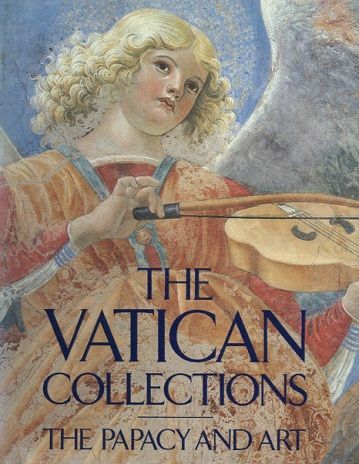The Vatican Collections: The Papacy and Art
Metropolitan Museum of Art | 1982 | ISBN: 0870993216 | English | PDF | 255 pages | 70.75 Mb
Many of the Vatican's supreme art treasures are represented in the unprecedented exhibition that is the occasion for this book. These works are drawn not only from the Vatican Museums, but from Saint Peter's and its Treasury, the Apostolic Palaces, and the Vatican Library. Thus, this volume brilliantly illustrates the entire history of papal patronage and collecting - the single longest and most influential collecting tradition in the Western world. The objects range from ancient Greek vases and sculptures to modern works by Henri Matisse and André Derain.
Ever since the founding of Saint Peter's, about 320, the popes have commissioned, preserved, and acquired works of art. The catalogue traces the development of these activities through the centuries, opening with an illustrated history of the Vatican Museums by Carlo Pietrangeli, the director general. Each of the fifteen sections explores a different aspect of the Vatican collections and is introduced by an informative essay. These introductions and the scholarly texts that describe each of the more than two hundred works in the exhibition were written by eminent curators at the Vatican Museums and The Metropolitan Museum of Art.
In the first two sections are examples of the few surviving remains from the decoration of Old Saint Peter's, the church that stood on the site of the present basilica and was torn down in the fifteenth century to make way for it. These works include two precious mosaics, two fresco fragments of Saints Peter and Paul, and a series of eight reliefs from the fifteenth-century ciborium of the high altar.
The next four sections highlight papal patronage from the Late Gothic through the Baroque period, and the objects illustrated evoke the beauty of the Apostolic Palaces. Raphael's tapestry, The Miraculous Draught of Fishes, and two splendid sculptures from antiquity, the Apollo Belvedere and the Belvedere Torso, convey, in a dramatic juxtaposition, the harmonious and powerful vision at the heart of High Renaissance artistry. A set of pontifical vestments, as well as the monumental silver-gilt cross and two of the candlesticks for the main altar of the new basilica, recalls the solemn splendor of the Renaissance church, while several works by Bernini remind the reader of the role played by this artist, along with popes Urban VIII and Alexander VII, in fostering Baroque art.
Link :
Code:http://ul.to/ivdwcg5k
Please visit our sponsors
Results 1 to 1 of 1
-
27-04-2015, 08:27 PM #1Senior Investor

- Join Date
- Jan 2012
- Posts
- 7,166
- Feedback Score
- 0
- Thanks
- 0
- Thanked 6 Times in 6 Posts
 The Vatican Collections The Papacy and Art
The Vatican Collections The Papacy and Art
-
Sponsored Links
-
Sponsored Links
Thread Information
Users Browsing this Thread
There are currently 1 users browsing this thread. (0 members and 1 guests)
24 Hour Gold
Advertising
- Over 20.000 UNIQUE Daily!
- Get Maximum Exposure For Your Site!
- Get QUALITY Converting Traffic!
- Advertise Here Today!
Out Of Billions Of Website's Online.
Members Are Online From.
- Get Maximum Exposure For Your Site!
- Get QUALITY Converting Traffic!
- Advertise Here Today!
Out Of Billions Of Website's Online.
Members Are Online From.






 LinkBack URL
LinkBack URL About LinkBacks
About LinkBacks








